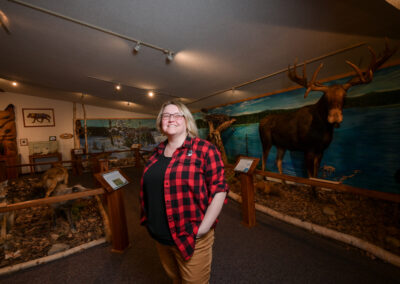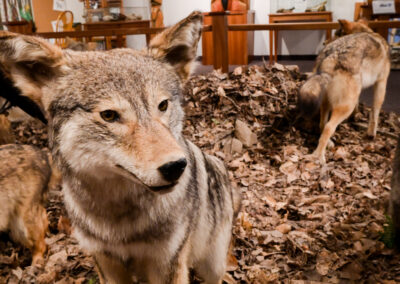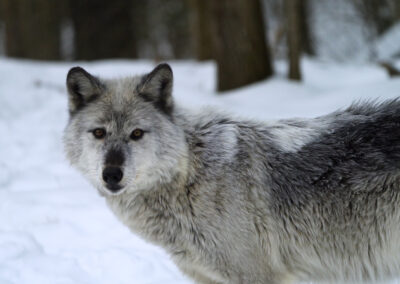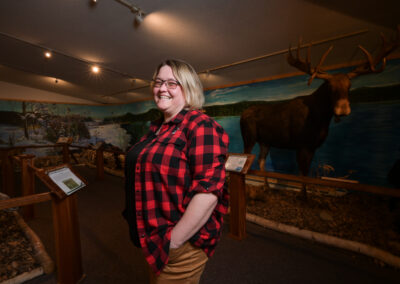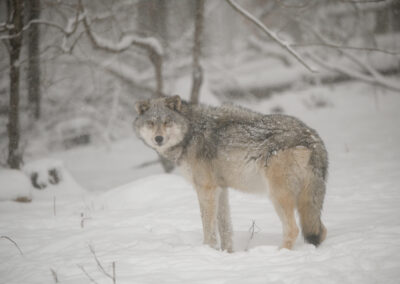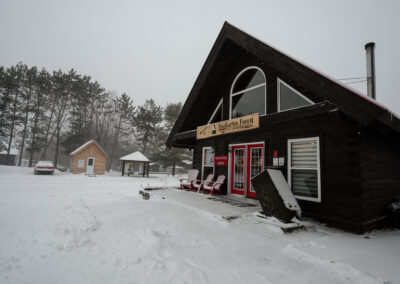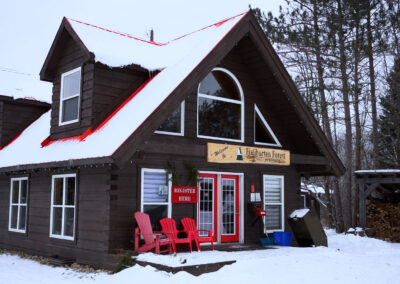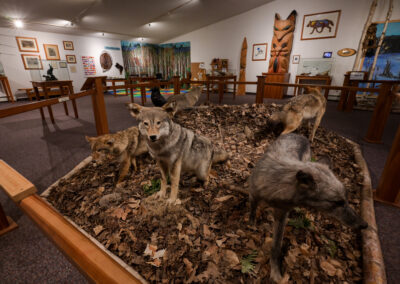Where Conservation Meets Adventure
Haliburton Forest & Wild Life Reserve
Spanning over 100,000 acres, this multi-use forest is not only a haven for outdoor enthusiasts but also a model for conservation and sustainable practices.
Under the stewardship of General Manager Tegan Legge, Haliburton Forest & Wild Life Reserve has expanded its reach, solidified its commitment to sustainability, and continues to foster a deep appreciation for the natural world.
A vision Rooted in Sustainability
The journey began over 60 years ago when a depleted, unhealthy forest was transformed into the thriving ecosystem it is today. Purchased by the Schleifenbaum family in the late 1950s, the land, which had been heavily logged, was given a new lease on life. As Tegan Legge explains, “The property came up for sale and was actually offered to Algonquin Park, but they saw no value in the land. The Schleifenbaums, however, saw the potential and began the long process of restoring the forest.”
Since its inception, Haliburton Forest has been a pioneer in sustainable forestry practices. “We’ve been sustainable since 1962,” Legge proudly states, highlighting the forest’s early commitment to ecological stewardship. The forest’s sustainable management practices have not gone unnoticed; it received the first-ever Forestry Stewardship Council (FSC) certification for sustainability for private lands in North America in the late 1990s, a certification it still holds today.
Expanding Horizons
Over the years, Haliburton Forest has evolved from its humble beginnings into a world-renowned destination for both forestry and tourism. Legge, who has been with the forest for over 15 years, has witnessed this transformation firsthand. “When I first started here, we were only 50,000 acres. Now, we’ve expanded to over 100,000 acres,” she reflects.
The expansion hasn’t been limited to land acquisition alone. Haliburton Forest now operates four sawmills across Ontario and has ventured into new areas, such as acquiring businesses like Yours Outdoors and introducing new experiences like sporting clays and ice climbing. The forest has also established itself as a global player, attracting international clients who come to experience its unique blend of adventure and tranquility.
An Outdoor Lover’s Paradise
Haliburton Forest’s offerings are as diverse as the landscape it protects. With 100 lakes, billions of trees, and 400 wetlands, the forest truly is an “outdoor lover’s paradise.” Whether it’s hiking, biking, snowmobiling, or canoeing, there’s something for everyone. The forest is also home to unique attractions like the Wolf Centre and the Canopy Tour, ensuring that visitors can immerse themselves in nature in a variety of ways.
Legge emphasizes the forest’s appeal to a wide range of outdoor enthusiasts: “Sometimes you’re only a hiker, or only a snowmobiler, but we’re seeing a lot of crossover. With so much to offer, we have everything for everybody.” The forest’s commitment to accessibility is also evident in its efforts to expand quiet-use trails for winter hiking, snowshoeing, and fat biking, making the wilderness experience even more inviting.
Innovations for a Sustainable Future
Haliburton Forest’s dedication to sustainability goes beyond its forestry practices. The forest is at the forefront of innovative projects like biochar production, a process that transforms wood into a sustainable material with a variety of applications. Legge describes biochar as “a byproduct of something being burnt really hot, and in this case, that something is wood. It’s a very sustainable way of doing soil remediation and has the potential to reduce our carbon footprint globally.”
The forest’s commitment to green energy is also evident in its exploration of electric snowmobiles, part of a broader effort to minimize environmental impact while maintaining its status as a top destination for outdoor recreation.
Partnerships and Community Engagement
Haliburton Forest’s success is also due in part to its strong partnerships with local businesses, universities, and international organizations. The forest collaborates with institutions like the University of Freiburg and Hocking College on long-term research projects, contributing valuable data to better understand and manage the forest ecosystem. “We work with plenty of different universities and colleges from all around the world,” says Legge. “All this data comes into a database that our foresters can use to see what trends are happening and what’s going on in the forest.”
On the tourism side, the forest partners with local accommodations and businesses to enhance the visitor experience. These collaborations not only help promote the region but also contribute to the local economy, reinforcing the forest’s role as a key player in the community.
As Haliburton Forest continues to grow, its commitment to sustainability and innovation remains steadfast.
The forest’s future goals include expanding its trail network, enhancing accessibility for visitors, and furthering its research and development initiatives. “Our biggest goal is just to attract more people here, but never feel like overtourism,” Legge explains. The vision is clear: to continue providing a serene and enriching experience for visitors while preserving the natural beauty and ecological integrity of the Haliburton Highlands.
To find more succuss stories in the Haliburton Highlands click here.

